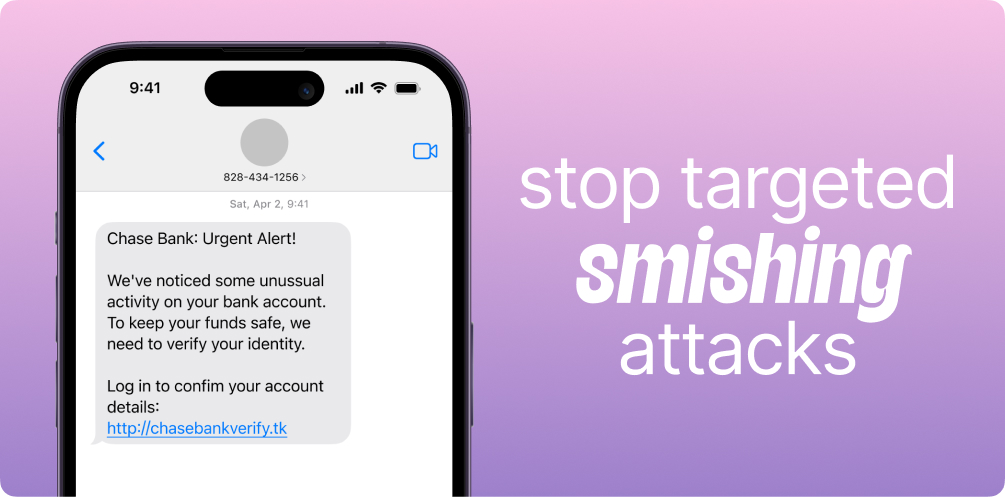
Welcome to the digital era, where our smartphones are more than just devices for calls and messages; they have become gateways to our personal and financial lives. With this increased connectivity, however, comes the risk of falling victim to cyber scams. One such deceptive tactic that has gained prominence is "smishing," a blend of SMS (Short Message Service) and phishing.
In this comprehensive guide, we will delve into what smishing is, how it differs from phishing, real consumer stories, tactics used by scammers, how to identify smishing attacks, prevention methods, and steps to take if you've fallen for a smishing attack.
Table of Contents
- Understanding Smishing: What Is It and How Does It Differ from Phishing?
- Real Consumer Stories: Impact of Smishing
- How Do Scammers Target Smishing Attacks?
- How to Identify Smishing When It Is Happening to You?
- Can You Prevent Smishing from Happening to You?
- Common Smishing Tactics and What to Look Out For
- What to Do If You Think You've Fallen for a Smishing Attack?
- How Can You Prevent Smishing Attacks from Happening to You?
- Conclusion: Protect Yourself from Smishing in 2024
Understanding Smishing: What Is It and How Does It Differ from Phishing?
What is Smishing?
In the world of cybercrime, smishing has become a prevalent threat. Short for SMS phishing, smishing involves scammers using text messages to deceive individuals into divulging personal information or clicking on malicious links. Unlike phishing, which typically occurs through email, smishing targets users through text messages on their smartphones.
How Does Smishing Differ from Phishing?
While both smishing and phishing aim to trick individuals into revealing sensitive information, smishing specifically leverages the immediacy and familiarity of text messages. Phishing emails may sometimes be caught by spam filters, but text messages are not protected by the same filters offered in email inboxes, making smishing attacks more direct and potentially dangerous.
Real Example of Smishing: Golden, CO Couple Loses $140K
Scammers often use smishing because they can design scams to be highly believable and pose as well-known organizations you use regularly, such as your bank, the postal service, or even your coworkers. And, for many, the consequences can be devastating.
How Do Scammers Target Smishing Attacks?
Tactics Used by Smishing Scammers
Smishing scammers employ a variety of tactics to deceive unsuspecting individuals:
- Impersonation: Scammers often impersonate trusted entities such as banks, service providers, or even friends or family members. This tactic aims to establish credibility and trust.
- Urgency: Messages create a sense of urgency, urging recipients to take immediate action to avoid consequences. Scammers use phrases like "Your account is compromised" or "Immediate action required" to pressure victims.
- Offers and Rewards: Luring victims with promises of prizes, gift cards, or exclusive deals is a common tactic. Messages may claim that you've won a prize and need to provide personal information to claim it.
- Spoofed Numbers: Scammers use spoofed or fake numbers to appear legitimate and trustworthy. They may use local area codes or even numbers that resemble those of official institutions.

How to Identify Smishing When It Is Happening to You?
Signs of a Smishing Attempt
Recognizing a smishing attempt requires vigilance and an understanding of common indicators:
- Unknown Sender: Be cautious of text messages from unknown numbers, especially if they request personal or financial information. If you don't recognize the sender, proceed with caution.
- Urgent Requests: Scammers often create a sense of urgency, pressuring you to act quickly. They may claim that your account is in jeopardy and immediate action is required to avoid consequences.
- Unsolicited Links: Avoid clicking on links in text messages, especially if they seem suspicious or lead to unfamiliar websites. These links may redirect you to phishing websites designed to steal your information.
- Misspellings and Errors: Pay attention to spelling mistakes or grammatical errors in the message. Legitimate businesses typically maintain professional communication and are less likely to have errors.
7-day free trial
Goodbye, spam texts. Hello Blockr.
Block text scams with Blockr and protect your peace of mind.
Download now for iOSCan You Prevent Smishing from Happening to You?
Steps to Reduce Vulnerability to Smishing
While it's challenging to completely eliminate the risk of smishing, you can take steps to reduce your vulnerability:
- Be Skeptical: Always question unexpected requests for personal information or actions. If something seems too good to be true or raises suspicions, trust your instincts.
- Enable Two-Factor Authentication: Adding an extra layer of security to your accounts can mitigate the impact of a smishing attack. Even if scammers obtain your credentials, they will still need the second factor to access your account.
- Educate Yourself: Stay informed about common smishing tactics and how to identify them. Awareness is key to recognizing potential threats and protecting yourself.
Common Smishing Tactics and What to Look Out For
Tactics Used by Smishing Scammers
Here are some common tactics employed by smishing scammers:
- Pretending to be a Bank: Scammers may send texts claiming there's a problem with your bank account and ask for login details. They may create a sense of urgency by stating that your account will be locked unless you provide information.
- Prize or Gift Scams: Messages promising rewards or prizes, but requiring personal information to claim. These messages often ask for your name, address, phone number, and sometimes even financial details.
- Package Delivery Scams: Fake messages about undelivered packages, prompting you to click on a link for more information. These messages capitalize on the common experience of online shopping and package deliveries.
Signs of a Smishing Attempt
Here are some signs that may indicate a smishing attempt:
- Requests for Personal Information: Be wary of messages that ask for sensitive information such as Social Security numbers, passwords, or credit card details. Organizations that use this information will typically never contact you out of the blue.
- Urgent Demands for Action: Scammers often create a sense of urgency, pressuring you to act quickly. Messages may claim that your account is compromised and immediate action is required.
- Unsolicited Links or Attachments: Avoid clicking on links or downloading attachments from unknown sources. These could lead to phishing websites or malware installations.
- Poor Grammar and Spelling Errors: Legitimate businesses typically maintain professional communication. Be cautious if you notice spelling mistakes or grammatical errors in the message.
What to Do If You Think You've Fallen for a Smishing Attack?
Immediate Steps to Take
If you suspect you've fallen for a smishing attack, it's crucial to act quickly to minimize potential damage:
- Do Not Respond: Avoid replying to the text or providing any further information. Engaging with scammers can lead to further attempts to exploit you.
- Contact Your Bank or Service Provider: Inform them of the situation and follow their guidance. They can advise you on steps to secure your accounts and prevent unauthorized access.
- Monitor Your Accounts: Regularly check your bank and credit card statements for any unauthorized transactions. If you notice any suspicious activity, report it immediately to your financial institution.
- Report It: While this won't protect you from future smishing attacks, it is helpful to report suspicious activity to the Federal Trade Commission to protect others from being victimized.
How Can You Prevent Smishing Attacks from Happening to You?
Proactive Measures for Smishing Prevention
While no method is foolproof, taking proactive steps can significantly reduce your risk of falling victim to a smishing attack:
- Stay Informed: Educate yourself about smishing tactics and warning signs. Awareness is the first line of defense against scammers. This won't prevent becoming a smishing target, but can help you proactively identify if it is happening to you.
- Enable Spam Filtering: Most smartphones have built-in spam filtering options that can help identify and block suspicious messages. Though, it is important to note that iPhone users are offered limited filtering protection as iPhone only allows text filtering for all text messages that are not from your contacts.
- Download Blockr: Blockr is a new and highly effective iOS app designed to prevent smishing attacks. With advanced AI and machine learning, Blockr analyzes incoming texts and blocks suspicious messages before they reach your inbox. It offers customizable settings and a user-friendly interface for easy management.
How can Blockr help protect you from smishing?
Blockr uses AI and machine learning to eliminate text and smishing scams on your iPhone. Unlike other text blocking solutions that will only block scams if you have reported them, Blockr's algorithm uses predictive signals to ensure suspicious smishing activity never reaches your inbox.
Here's how to access Blockr's advanced spam text protection:
- Go to the iOS app store on your smartphone
- Search for “Blockr” in the search bar
- Access the Blockr app store page, and select “download”
- Open the Blockr app and create a new Blockr account
- Configure and customize your Blockr protection settings
Blockr offers advanced and customizable smishing protection features, designed to stay one step ahead of smishers and scammers. Use Blockr’s customizable keyword protection packs, email domain blocking, and personalized block lists to ensure your iMessage inbox always feels safe and secure.
Conclusion: Protect Yourself from Smishing in 2024
In the ever-evolving landscape of cyber threats, smishing has emerged as a significant concern for smartphone users. However, with knowledge and awareness, you can safeguard yourself against these deceptive tactics. By understanding what smishing is, how scammers target victims, real consumer stories, tactics used by scammers, and prevention methods, you can navigate the digital world with confidence.
Remember, smishing relies on tricking individuals into taking action, so staying informed and skeptical is crucial. Whether it's identifying common smishing tactics, knowing what to look out for, or taking preventive measures like downloading Blockr, you have the power to protect yourself from falling victim to smishing attacks.
In 2024, as our reliance on smartphones continues to grow, it's essential to remain vigilant and proactive in securing our personal information and finances. By following the tips and steps outlined in this guide, you can stay safe from smishing and enjoy a worry-free digital experience.
Stop the scamxiety™
Eliminate spam texts and take back control of your iPhone.You decide who can and can't text you with Blockr.
Download Blockr today